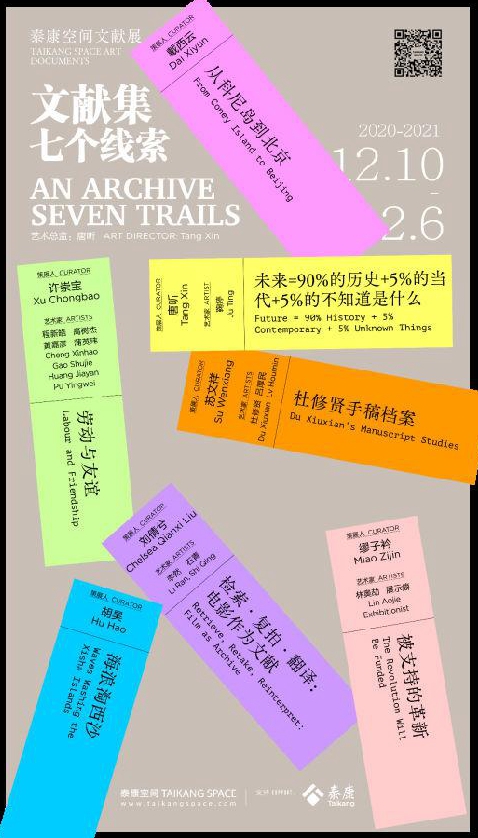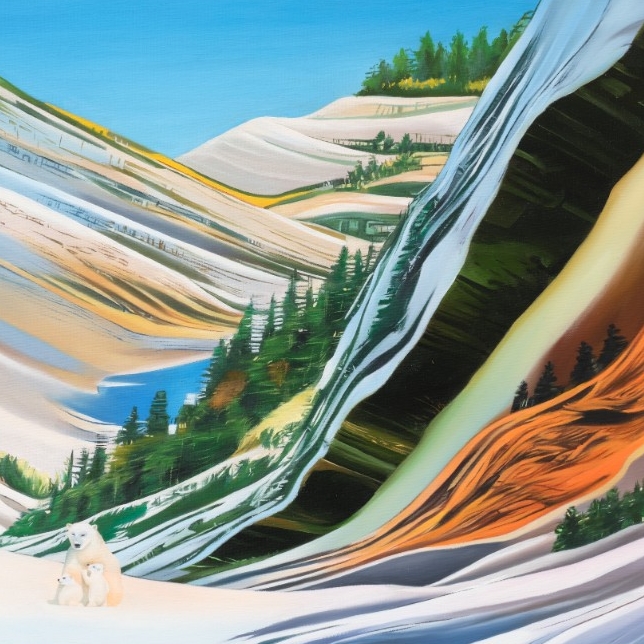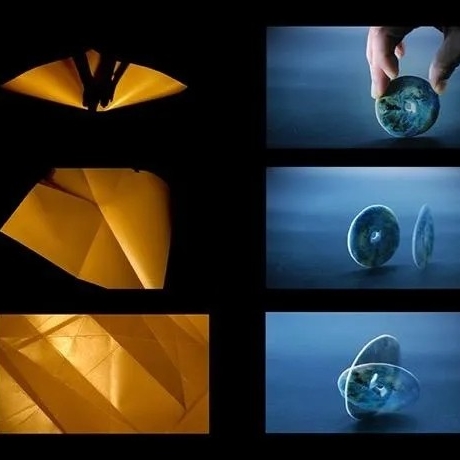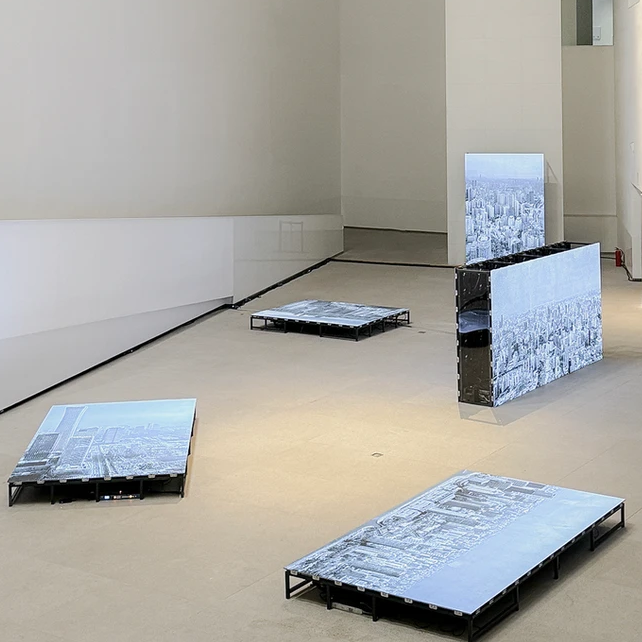
Since the year 2020 marks the "Art Documents Year" of Taikang Space, we would like to discuss the perception of archival material as well as its new understanding of its definition and extension in the context of new media and technological changes. Meanwhile, we focus on the visualization of art documents and research. As the closing exhibition of this year, "An Archive: Seven Trails" consists of seven independent sections arranged by seven curators and researchers from Taikang Space' s academic team based on their own research interests and problem awareness of various types of archival materials. It involves issues such as the Chinese films in the 1930s, labour and friendship, photographer' s manuscripts, photography exhibition history, contemporary art exhibition history, policies on literature and art, and construction planning and urban studies. Taikang Space always emphasizes the connection between the present and the history, that is, a mutual view. In the following seven sections, we will see seven ways to understand and explore the archives.
7 CURATORIAL SECTIONS
FROM CONEY ISLAND TO BEIJING
Curator: Dai Xiyun
As if immune to time and decay, metropolises are self-renewing factories that tirelessly manufacture new experiences. Deploying architectures as ideologies, they design and produce for nations and states, or desires and pleasure. In mental experiences spatially shaped by architectures, time is suspended, body, however, gets to navigate through these archives of space and reads them - archives that possess images without yet being imaged, archives that are still living.
Coney Island and Beijing, each spurs its own zealots of architectures on. Vain and ambitious, they crave progress and expansion and can create a city with a complete image of itself by passion and technology alone. Inside a fleeting section of half a century, two diametrically opposing ideologies have incubated hyperdense congestion and collective grandness into two directions for expansion, "vertically" and "horizontally". The two cities, one seen as the embryo of the Manhattanism, the other an experiment of a rising communist nationalist state, both occurred, and both are still growing.
This section brings together the explorative phases of the two cities. The historically realized speculations are themselves spatial archives. They were built and demolished, then fell back into history. But can unrealized architectural and planning visions also corroborate the progress of the metropolises? Can the progress also be reconstructed from private experiences that are absent from grand narratives? Do historically rejected speculations entail a new future? From Coney Island to Beijing is a path that retraces speculations in order to point towards a present after the two intertwining urbanism.
LABOUR AND FRIENDSHIP
Curator: Xu Chongbao
Artists: Cheng Xinhao, Gao Shujie, Huang Jiayan, Pu Yingwei
This unit explores the theme of “Labor and Friendship” through a series of album and related literature transcending time and space.
Labour is recognized as one of the origins of art and a common theme in art creation and news reporting. When labor is expressed in different cultural contexts as the target of observation, there will emerge various symbolic relations among workers and between workers and labor environment, and friendship is one of them.
The image of workers and peasants is the main body of labour in the fine arts and photography of the People’s Republic of China. With different types of real labour involved, the creators have produced their own artistic expression interests according to the characters, themes, scenes and media.
When the abstract and international friendship becomes something specific in labour, the friendship and tacit understanding established in common labour, regarded as the practice of internationalism, will contribute to the overflow expression of workers’ personal feelings.
Today’s artists are faced with the same topic of “Labour and Friendship,” such as physical labor in creation, the image of new workers and peasants, and the study of labour history and friendship among countries.
FUTURE = 90 % HISTORY + 5% CONTEMPORARY + 5% UNKNOWN THINGS
Curator: Tang Xin
Artist: Ju Ting
Pay attention to the contemporary world, because we live in the present, seemingly moving forward with the times into future. However, this is actually an illusion. If we look at the torrent of human development from the perspective of the macro-history, we may find that today’s so-called truth of progress may be just another version deduced from the repeated experience of predecessors. And art is one of the reflection of this version.
It is a good way to enter the macro- history by referring to the past archives, the carrier or evidence of various information. But these references also float in the torrent, and form their own ocean, swallowing the contemporary era in which every moment disappears. For the interpretation of China and her art in the 20th century, this vast ocean in the torrent serves as the best information pool where if lucky enough, people may see something drifting along with the torrent.
DU XIUXIAN’S MANUSCRIPT STUDIES
Curator: Su Wenxiang
Artists: Du Xiuxian, Lv Houmin
Du Xiuxian (1926-2014), a photographer, gained his reputation for numerous photographs of leaders he shot in the 1960s and 1970s. In particular, when he was Deputy Director of the Photography Department of Xinhua News Agency and head of the Central News Group and the Central Foreign Affairs Photography Cooperation Group, he was so close to the power hub that it gave him the experience and insights few counterparts could surpass at that time. As is known to all, one of the consequences of media monopoly is the monopoly of production, namely, the information imbalance of some kind. That is why we call many photographers, including him, the “red-wall photographer” (photographer inside Zhongnanhai) today. We are well aware that color is the nature of the service object, and that the real obstacle is the differentiation caused by information asymmetry.
Based on several manuscripts of Du made in the late 1970s, in Taikang Collection, including a complaint letter to People’s Daily on “automatic revision” in the name of the Photography Department of Xinhua News Agency, a proposal for the reediting and revision of a photo on some publication mourning over the great man’s death, and recommendations for staff
of several ministries and commissions
to pick up the new version of the
leader’s portraiture at the Photography Department of Xinhua News Agency for the celebration of October 24, 1976. There were also many names involved in these documents. Connecting these names with events, it seems that we can partly “reproduce” the scene at that time, and see an indistinct relationship network centered on Du’s photographic activities. It is a case of political interaction or vice versa in the perspective of photography- as-media.
In this network architecture, the contradiction and reconciliation between the production and use of top-level photographic images, namely, the order and tension of production and management, as well as the perceived power and its pulsation due to the proximity to the political center, can be re-exposed by these dusty documents under the category of photography. We hope the above can inspire us in the unveiling of the mystery and differentiation.
WAVES WASHING THE XISHA ISLANDS
Curator: Hu Hao
From October 1 to November 30, 1974, the “One of the South China Sea Islands — Xisha Islands Photography Exhibition” (hereinafter referred to as “Xisha Photography Exhibition”) opened jointly with the “National Photographic Art Exhibition,” one of the supreme level in official systems under the artistic category of photography, in the National Culture Palace Beijing. It coincided with the critical turning point toward the low tide of the “Denouncing Lin Biao and Confucius Campaign” launched earlier that year. However, due to the intervention of Jiang Qing and others, “Xisha Photography Exhibition” was still endowed with a distinctive flavor of “Denouncing Lin Biao and Confucius Campaign” and several works with ultra- left meaning dominated the exhibition in the protagonists’ halo. After the inauguration, central newspapers such as People’s Daily and major local newspapers including Hubei Daily, Xinhua Daily and Wenhui Daily (Shanghai) all reserved full pages for the exhibition in their formal issues. Meanwhile, intervened by Jiang Qing, the Chinese Photography, which just resumed publication in 1974, also published special articles on the exhibition with detailed comments and analysis. However, with the fall of the ultra-leftists in the Party in the mid- and late 1970s, “Xisha Photography Exhibition” rapidly descended to the target of fierce criticism. Chinese Photography published a series of articles to reveal and criticize the close relationship between the ultra- leftists’ power-usurping plot and the exhibition. The same photos, exhibition and organization mode were subject to two completely opposite narrations. However, in terms of archival research, how did the propaganda and criticism of “Xisha Photography Exhibition” work in history? Is there any time difference in the penetrating process of speaking rights from the central Party newspaper to the local newspapers? If so, how did the time difference indicate the publicity effect of the event of “Xisha Photography Exhibition” reversely?
RETRIEVE, RETAKE, REINTERPRET: FILM AS ARCHIVE
Curator: Liu Qianxi
Artists: Li Ran, Shi Qing
Scenes of City Life, directed by Yuan Muzhi and shot by Wu Yinxian, was the first Chinese musical comedy film released in 1935. With multiple storylines set in Shanghai in the 1930s, it was an absurd story nested within scenes where the leading characters watching the peepshow at the start and end of the film. In the film, almost each arrangement of the plot or the design of the scene can be regarded as one of the typical themes to discuss the issues about “Shanghai in the 1930s”— the particular time and space— such as capitalism modernity, city flaneur, the expansion of materialistic desire and the spell of consumerism, circulations of objects and reflections between old and new media, diverse public consumption spaces, the imagination of middle-class and gender consciousness... The richness and representativeness introduced by the film let it become a typical and even a “perfect” text.
Using classic films as archive, how can we penetrate the barrier of such a perfect example, re-enter and initiate new discussions? The section “Retrieve, Retake, Reinterpret: Film as Archive” serves as a prelude to answer these questions, with the demonstration of several ways, actions, paths or possibilities. In this section, the curator divides the original film of Scenes of City Life into various fragments, and transformed the linear narrative into the logic of the paralleling interlinkage of (moving) images. In the project Shanghai Redux, artist Shi Qing revisited Shanghai urban spaces that have been repeatedly filmed since the 1920s, and re-rehearsed, wrote and visited it in comparison with the original films. Similarly inspired by a script in another Shanghai old film Crossroads, artist Li Ran revealed the complexity of the petty intellectual groups through satirical cartoons in Don't Be So Pessimistic, There Is Always Translation To Do Anyway. Here “the work of translation” is not only an occupation, but also presents as an overarching metaphor of Chinese modernity.
THE REVOLUTION WILL BE FUNDED by
Curator: Miao Zijin
Artists: Lin Aojie, Exhibitionist
The Archive and Research Center of Taikang Space was established in 2015, with the aim to provide academic support for the existing curatorial practice and research projects initiated by Taikang Space. At the same time, the center also attempts to transform the concerning academic issues and its research results into curatorial production as document exhibitions. With the accumulation of research in the Archive and Research Center, Taikang Space plans to launch three document exhibitions in 2020, in order to investigate another way of narration in the context of modern and contemporary art research in China.




























